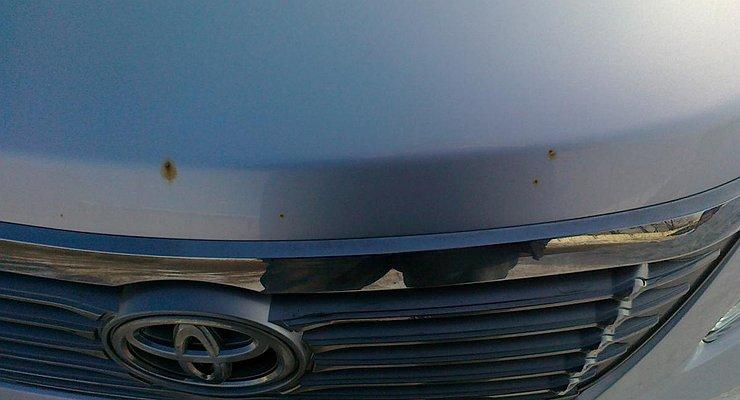
How to deal with rusting chips on the hood and doors
On the body of any car, if it does not stand all its life in a garage, but drives in a stream of the same vehicles, from time to time chips from flying stones form. Each of them becomes a hotbed of corrosion. A car owner who notices a paintwork defect that has appeared immediately faces a classic question: what to do now ?!
To finish a whole body element for the sake of one or two rusty dots, you see, is quite extravagant. A week later, you can “catch” a new stone and what, again for repainting ?! The other extreme in such a situation is to wait until the amount of microdamage to the paintwork reaches a certain critical value and only then surrender to the service station for painting work.
True, in this case there is a considerable risk of losing control over the situation and bringing the matter to a state in which through holes begin to appear in the metal. Yes, and this is not a cheap pleasure - repainting even parts of the body.
Some car owners follow the half way, according to the principle “what I don’t see, that’s not there”. They buy a special marker in the car shop for touching up chips and retouch the affected areas of the paintwork with it. For a while, this cosmetic surgery is enough. But sooner or later, rust will come out from under any “touch-up”. Although, for professional auto dealers, the method is quite a working one.
For those who are going to drive a car with chips happily ever after, experts most often offer the following recipe. You need to purchase a rust modifier and a jar of automotive tint varnish in a suitable color. The chip is first treated with anti-rust chemicals, which, in theory, should turn it into an analogue of an automobile primer, and then carefully painted over with paint. From our own experience, we note that this method gives reliable protection to the metal of the body, as they say, “through time”.

The restored coating will be almost 100% reliable if the above scheme also includes an intermediate coating of the chipped area with an automotive primer, the name of which contains the phrase “for rust” or something similar. The technology is next. The operation is carried out either under a roof or in steady dry weather. We process the chip with a rust modifier. And we try to do it in such a way as to remove from it as much as possible of the formed corrosion products. Let's dry. Further, with the help of some rag soaked, for example, in “galosh” gasoline, we carefully degrease the place of future painting.
When everything dries, fill the chip with a primer and leave to dry for an hour or two. Next, a second layer of primer is applied and left to dry for a day. The next day, you can smear with another layer of soil - for complete certainty. But you can get by by going to the finishing operation - covering the primed chip with car enamel. It should be put in two layers with a daily break for drying.
The author of these lines in this way, many years ago, processed a bunch of chips on the hood and the front passenger door of his own car, stripped to metal along the lower edge - in this form the car was inherited from its first owner. Since then — not the slightest hint of rust either there or there. The only negative is the aesthetic plan: on the hood you can see the influx of enamel in the places of former chips.